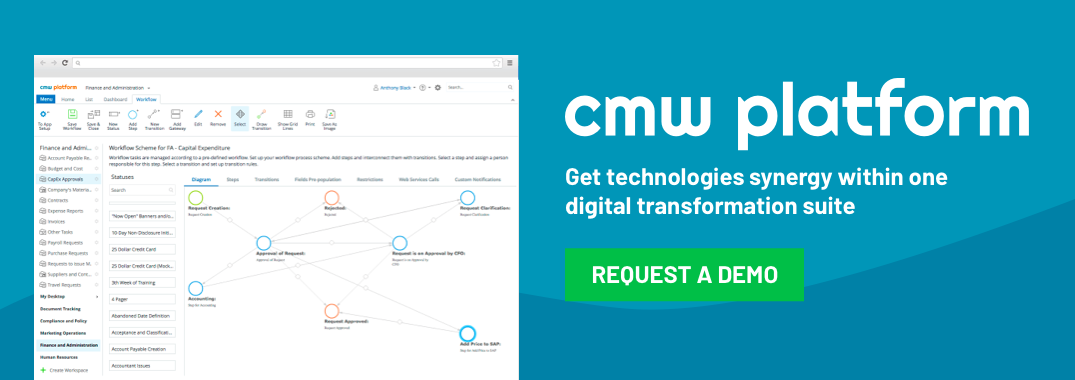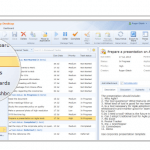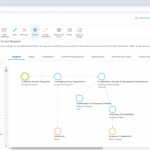How Does BPM Help in Crisis Management?
January 24, 2025
BPM (Business Process Management) handles the optimization of workflows, task automations, resource reallocation, and risk management which allows companies to keep business operations running smoothly regardless of the external situation.
This guide shows the major advantages business process management systems deliver to organizations in regard to dealing with crises.

Table of Contents
What is BPM and Why Does it Matter in Crisis Management?
In simple words, Business Process Management can be viewed as an approach to analyzing, designing, and improving the processes within the organization for more productivity. With the use of several tools and methodologies, BPM incorporates a carefully defined process that is both controlled and capable of functioning.
One of the primary tools to effectively handle crises is having the right processes in place which are constant and effective. This minimizes and controls the risks. Having the right tools in place for addressing, responding, and recovering from disruptions is part of what BPM deals with.
How BPM Enhances Crisis Management
BPM provides a strong foundation for managing emergencies by addressing key areas critical to business operations.
1. Workflow Optimization
BPM systems refine workflows, ensuring teams can focus on urgent priorities during emergencies. By allocating resources effectively, organizations reduce downtime and maintain operational efficiency.
2. Task Automation
Automation minimizes manual intervention in repetitive tasks, freeing up resources for critical decisions.
3. Risk Management and Forecasting
BPM helps organizations anticipate potential risks, enabling them to implement mitigation strategies proactively.
4. Real-Time Process Monitoring
Continuous monitoring provides real-time data for decision-making, allowing organizations to adapt to changing circumstances quickly.
5. Business Process Flexibility
Crisis circumstances are rarely predictable. BPM enables organizations to modify workflows quickly to meet rapidly changing demands.
Benefits of BPM in Crisis Management
The integration of BPM not only prepares organizations for emergencies but also delivers long-term value, including:
Benefit | Description |
Cost Reduction | Optimized workflows and automation reduce unnecessary expenses while maintaining productivity. |
Improved Productivity | Streamlined processes ensure teams can prioritize critical tasks, allowing for greater efficiency. |
Enhanced Agility | Flexibility to adapt processes helps businesses respond seamlessly to evolving challenges. |
Rapid Decision-Making | Real-time data analytics empower leaders to make informed decisions faster during critical situations. |
Business Continuity | Pre-established protocols and process resilience ensure operations run smoothly even during disruptions. |
Steps to Implement BPM for Crisis Management
To unlock the potential of BPM in crisis situations, organizations should focus on the following implementations:
1. Adopt Automation Software
Leverage automation tools to handle repetitive tasks efficiently while reducing human error. Some leading BPM platforms include UiPath and Blue Prism.
2. Establish Emergency Protocols
Develop contingency processes activated automatically within BPM systems during specific crises. For instance, creating pre-approved supplier protocols helps bypass delays.
3. Utilize Crisis Management Software
Enhance BPM capabilities by integrating specialized software for crisis scenarios. Solutions like Everbridge improve communication, while OnSolve offers real-time risk intelligence.
4. Regularly Test and Update
Crisis plans aren’t set-it-and-forget-it. Continuously monitor, evaluate, and refine workflows to adapt to new risks and business environments.
Post-Crisis Recovery with BPM
BPM’s value extends beyond the peak of a crisis. After the immediate threat has passed, BPM ensures a smoother recovery by analyzing performance, identifying bottlenecks, and implementing improvements for future resilience. Organizations routinely using BPM for post-crisis evaluation recover faster than those without structured processes.
Real-World Example
One global logistics company implemented a BPM system to coordinate operations during a trade disruption caused by geopolitical tensions. Using BPM tools for workflow automation and real-time data monitoring, the company reduced shipment delays by 40%, avoided client penalties, and maintained customer trust during a critical period.
Transform Your Crisis Management Strategy with BPM
When faced with emergencies, preparedness is non-negotiable. BPM systems offer businesses a proactive framework to handle crises efficiently, ensure business continuity, and recover stronger than before.
If maintaining operations during uncertain times feels overwhelming, it's time to explore BPM systems that can fortify your crisis response.
Start enhancing your crisis management capabilities today. With better workflows, smarter automation, and effective risk management, your organization can thrive during challenges and adapt seamlessly to the unexpected.
Interested in learning how BPM can transform your crisis strategy? Request a free consultation today!



